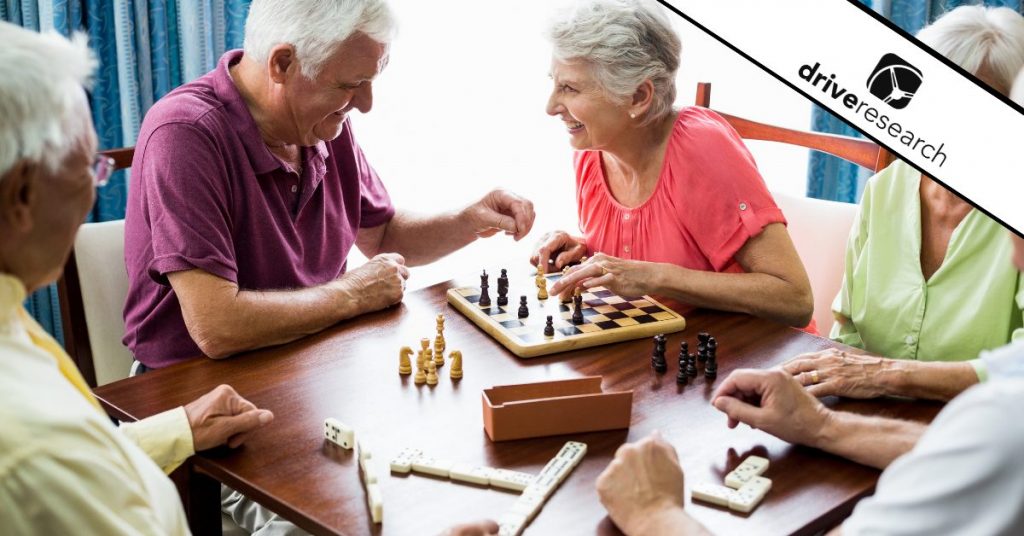
America is getting older. According to the 2017 Census, nearly one in four (22.9%) Americans is a baby boomer. As older Americans begin to retire, real estate developers have noticed an opportunity for retirement communities and senior housing.
Even though America is aging, it is important to consider many different factors before jumping to conclusions about the feasibility of a potential senior housing development. A market research feasibility study is a great place to start. For example, our feasibility studies company recently conducted a study for a real estate developer looking to test the success of a senior housing apartment in Upstate New York. The findings from this market research study will be used to acquire financing from investors.
Why Feasibility Studies for Real Estate Developers?
For real estate developers, having an in-depth understanding of a future property market is crucial to their success. Market research studies can provide essential and valuable information for real estate developers who are deciding between senior housing or market-rate apartments, how many units to offer, the number of bedrooms tenants want, desired amenities, cost of rent, and more.
Objectives for the Senior Housing Feasibility Study
A real estate developer partnered with Drive Research to conduct a senior housing feasibility study. The real estate developer wanted to use the market research findings to understand and eliminate risks, as well as guide important decision-making for the development. The results of the study would also be used to encourage additional financing from investors.
The feasibility study included a total of three components:
- Demographic and market trends analysis within specific distances of the proposed site
- A competitive assessment of like-competing senior and market-rate apartments within the relevant market area to the proposed property
- Two online surveys to examine the interest, appeal, and likelihood to reside at the apartment from community members
Learn more about the three components of a senior housing feasibility study.
Approach
The senior housing feasibility study involved three different components of market research. The findings from each of these elements came together to create powerful advice and recommendations for the real estate developer. These three components are detailed below.
Component 1: Demographic and Market Analysis
In order to have a better understanding of the market, our feasibility studies company used its proprietary, in-house data system. This program allows Drive Research to perform market analysis in any area, small or large.
The intent of the market analysis was to help serve as a basic check to determine and confirm demand in senior housing.
For the demographic and market analysis, Drive Research created a primary market area (PMA) of 5-miles and a secondary market area (SMA) of 10-miles surrounding the proposed site.
Using the data system, our team also analyzed the town the property was proposed to be located in.
The demographic and market analysis were conducted to provide the real estate developers a better understanding of the current and expected market. The data and trends included in the analysis provided a break-down of the market including
- Ages
- Genders
- Household incomes
- Household sizes
- Own and rent statistics
- Children in the household
These core demographics would impact the viability of potential senior housing or market-rate apartments in the area for our client.
The market analysis also included profiles for several key segments of residents using specific marketing segmentations.
Component 2: Competitive Assessment
The competitive assessment inventoried both senior housing and market-rate apartments in the DMA. Nearly 50 housing options were analyzed in the assessment.
In-depth analyses were conducted of the top four senior housing options and the top four market-rate apartment options. These profiles included maps, photos, online ratings, awards, an overview of the amenities offered, and more.
In addition to the in-depth profiles, Drive Research also reported a full inventory of competitive properties. The inventory highlighted the number of units, number of bedrooms, square footage, rental rates, occupancy rates, and more. The square footage and monthly rents were used for a cost analysis.
Internet research was also conducted to gather information about similar properties currently in the development stages.
Information for the competitive assessment was collected using a mixed-methods approach. Many apartment complexes do not advertise specific details such as rent and occupancy, which are needed to complete an assessment. Drive Research utilized online research, as well as mystery shopping calls and emails to gather the necessary information to complete a strong competitive assessment for the real estate developer.
Component 3: Online Surveys
Drive Research conducted two online surveys to better understand the feasibility of senior housing and market-rate apartments. The first survey was conducted to determine the feasibility of senior housing, while the second survey was to determine the feasibility of market-rate housing.
The surveys were designed to help:
- Identify a need for housing in the area
- The appeals of specific amenities and features
- Pricing
- Perception of the area
The surveys also provided insight into marketing and strategies for the real estate developer.
To collect responses, Drive Research turned to social media paid advertisements targeted at specific demographics and within the market area. The surveys raffled off one $100 Amazon gift card.
Findings and Report
The report provided an in-depth analysis of the three components (demographic and market analysis, competitive analysis, and online surveys) and a recommendation for either senior housing or market-rate apartments.
The findings were used by the real estate developer for marketing and strategy direction, to obtain approval, gain funding, and set the development project up for success.
The findings of the market research study remain confidential with our client.
Contact Drive Research
Drive Research is a national senior housing feasibility company. We work with developers and investors all across the country to assist with feasibility studies of all types beyond just senior housing.



